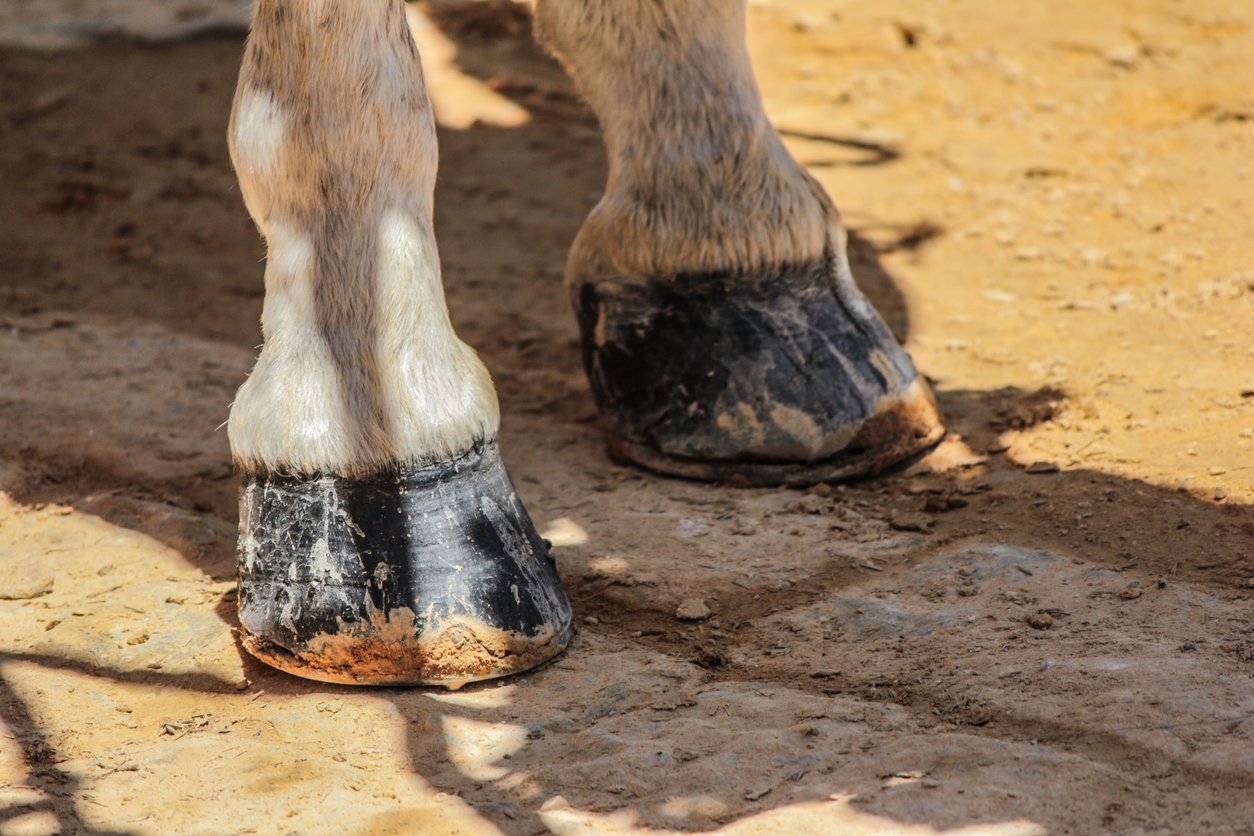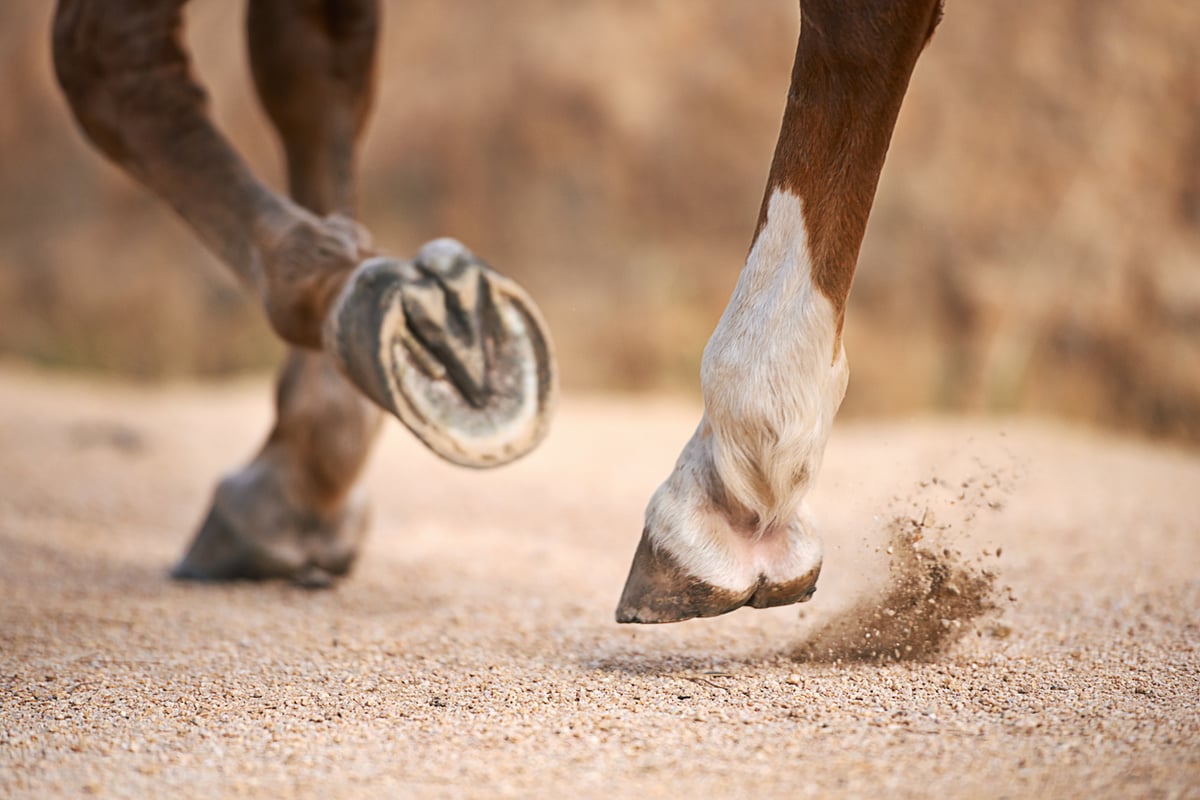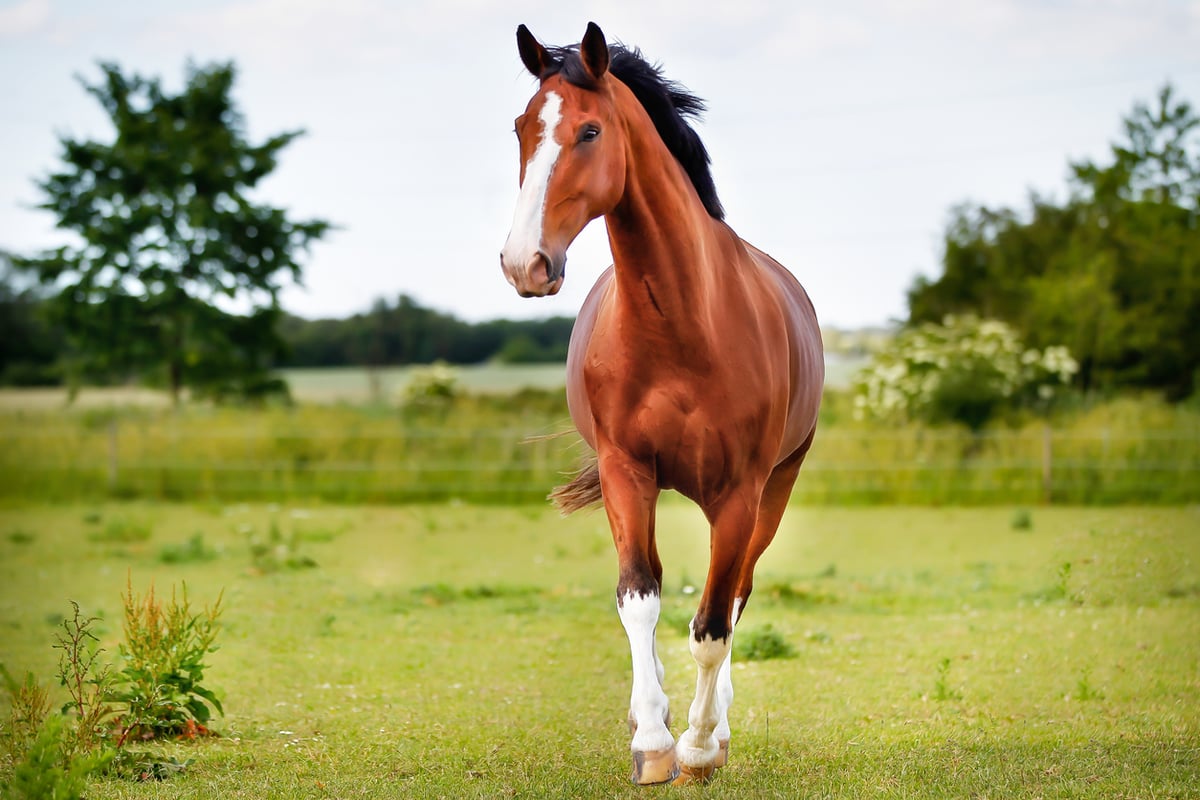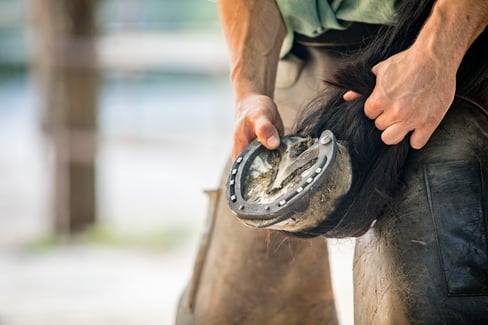Table of Contents
Keeping your horse happy and healthy is about much more than just feeding and caring for them.
Understanding the type of disease your horse is prone to can help you prevent illness or disability in the long run.
Navicular disease in horses is a perfect example.
This can lead to significant disability or lameness without proper treatment. In the worst cases, horses may have to be put down due to debilitating pain and the sheer inability to walk.
Navicular in horses causes lameness, and 2.5% of all lame horses have to be put down for mobility issues.
With navicular disease, however, prevention is half the battle.
The right nutrition, hoof care, and exercise can stave off navicular disease in your horse and keep them feeling at its best for a long time.
In this article, we will cover:
- What is navicular in horses?
- Navicular in horses symptoms
- What horse navicular disease could be caused by
- How to prevent navicular disease
- Treatment options for navicular syndrome
- Exercising a horse with navicular
Whether you are looking to maintain leisure horse vitality or sports horse performance, preventing and treating navicular disease is effective knowledge in helping them extend their quality of life and improve health in the long run.
What is Navicular Disease in Horses?
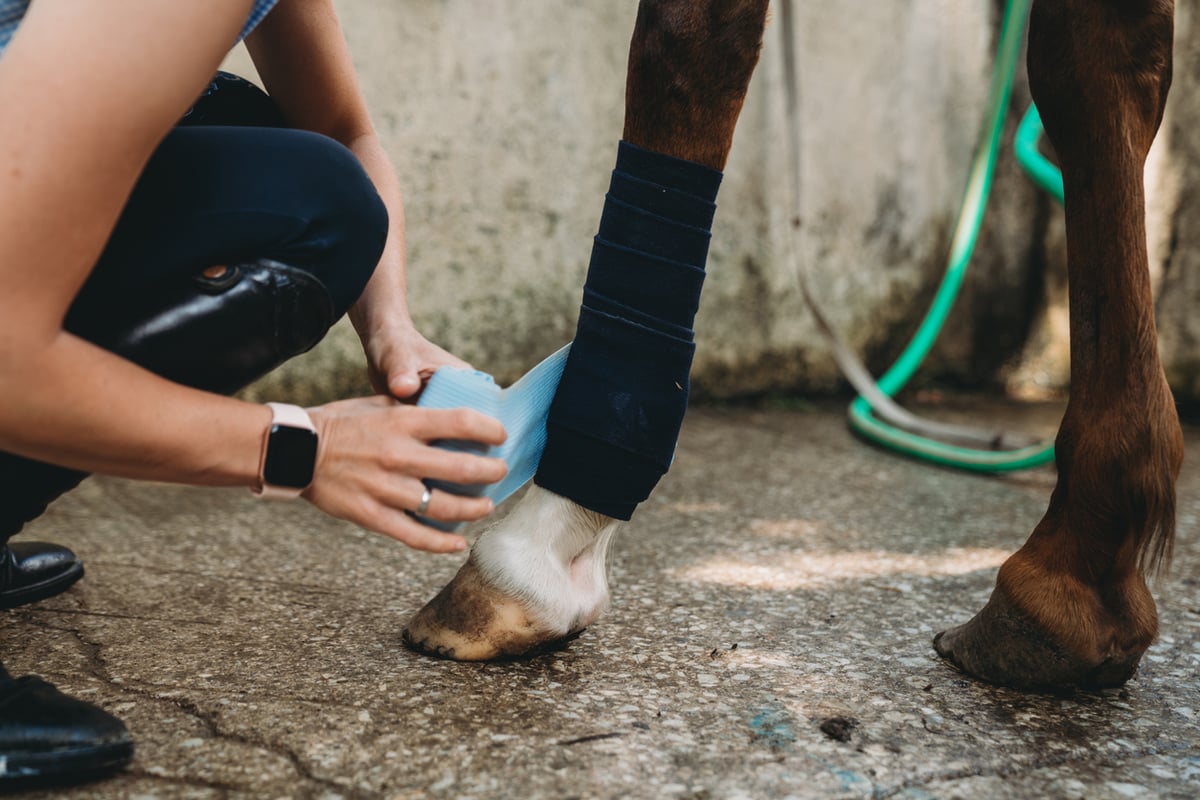
In horses, navicular disease occurs in the navicular bone, which is a small bone that joins together the hoof bones with strong ligaments.
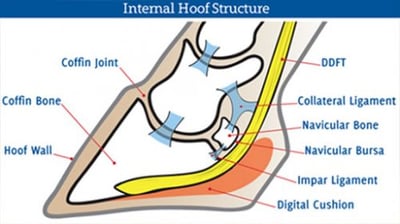
The navicular bone and surrounding ligaments aid your horse’s movement and help protect the coffin joint. When this essential bone becomes diseased, the result is inflammation and degradation of the bone and surrounding tissues. As you can imagine, the slow decline of these structures can result in a severely lame horse.
Navicular disease in horses is especially debilitating since the navicular bone in horse hooves serves as a fulcrum for several other ligaments and bones. While this disease usually affects the front hooves, it can also cause issues with the mobility of the back hooves.
What Are the Symptoms of Navicular Disease in Horses?
Given the debilitating nature of navicular disease in horses, you must be aware of the symptoms of this disease so that you can seek treatment for your horse as soon as possible. Remember that signs are physical and behavioural indications that you can see, while symptoms can be less visible.
Here are a few signs of navicular in horses that you can look for:
- Slight head bob when trotting
- Pointing of the hoof
- Short, choppy strides
- Occasional lameness when walking in certain conditions (e.g. difficult terrain, walking in small circles, etc.
- Lameness worsens if the hoof grows too long or if the heels become underrun
- One foot always landing in front of the other
- Shifting weight to one foot consistently
- Attempting to keep weight off the back heels by walking on toes
Noticing symptoms of navicular disease can be a bit tricky because they can be from a variety of ailments, so it’s hard to pin down whether a symptom like pain or fatigue is a result of navicular disease or something else. However, if you pair signs with symptoms, it’s often easier to connect the dots.
Potential symptoms of navicular disease in horses include:
- Lameness
- Chronic pain
- Physical immaturity
- Fibrotic myopathy
- Neuromuscular disorders
- Orthopedic disease
- Fatigue
- Inflammation or infection
Lameness is defined as a change in a horse’s gait, usually in response to some type of pain. Horse lameness is so common and can be caused by such a wide variety of diseases, ailments, and conditions that essentially every horse will experience some type of lameness in their lifetime.
If you notice lameness in addition to the signs of navicular disease in horses listed above, then it’s time to get your horse checked out by a vet.
Chronic Pain
The irritation in the navicular bone will usually lead to chronic pain in your horse, which may cause them to walk more irregularly and even require euthanization. Thankfully, pain can be controlled as your horse heals through the use of NSAIDs and joint supplements.
TRI-ACTA H.A. for equine is great for your horse suffering from navicular disease. This equine supplement contains therapeutic levels of glucosamine chondroitin for horses (these ingredients work together to support joint ligaments and muscles, as well as cartilage), Methylsulfonylmethane (MSM), which is a natural painkiller, and hyaluronic acid, which increased the viscosity of the synovial fluid in your horse’s joints, allowing for easier and more comfortable movement.
TRI-ACTA H.A. for Equine
Our maximum strength formula is perfect for horses that are ageing, experiencing arthritis and stiffness, are in training and competition, or under a heavy workload.
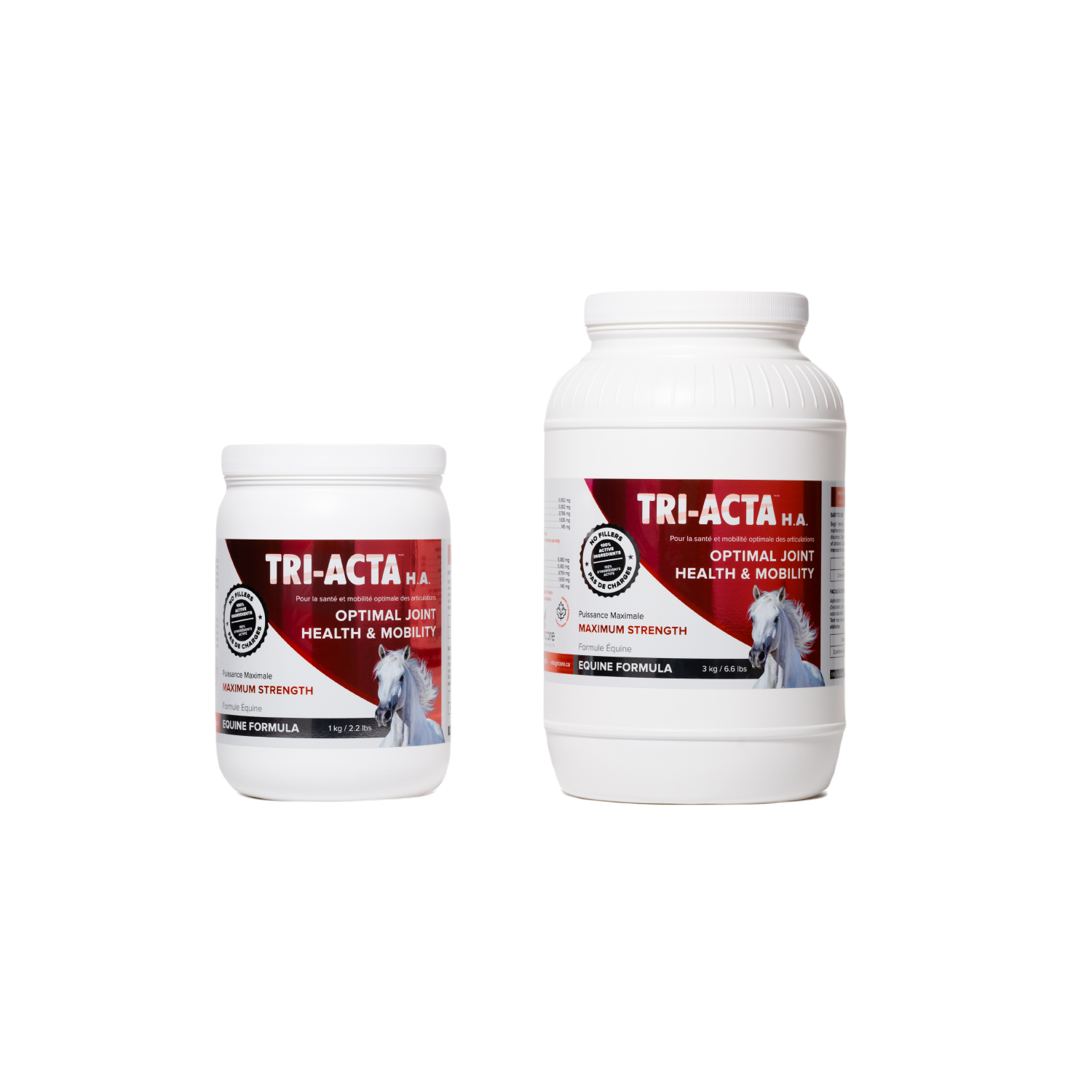
Physical Immaturity
The term “soft” describes the immature cartilaginous sites located throughout the horse's skeleton. While the bones and cartilaginous sites are forming, an overworked foal is susceptible to conditions such as arthritis and navicular disease in horses.
Fibrotic Myopathy
Horses with navicular disease may develop fibrotic myopathy, a mechanical lameness that occurs when scar tissue forms in the muscle. It primarily affects the upper part of the hindlimb causing gait abnormality.
Neuromuscular Disorders
Neuromuscular disorders in horses cause off-balance, wobbly hair in horses. Other signs include muscle twitching, weakness, weight loss, and sweating. Your veterinarian will likely take a muscle biopsy to diagnose neuromuscular disorder caused by navicular disease.
Orthopedic Disease
Orthopedic diseases in horses develop from abnormal cartilage, bone, and soft tissue development. The degeneration of the navicular bone and surrounding tissues can lead to orthopedic problems.
Fatigue
As navicular disease in horses progresses, lameness will worsen, and your horse may experience chronic fatigue. Constant trouble walking, getting up, and moving results in tiredness and weakness.
Inflammation or Infection
Navicular in horses is characterized by inflammation in the hoof around the navicular bone and connective tissues. The inflamed tissue is more susceptible to infections.
Ultimately, navicular symptoms are only part of the picture.
Sometimes a navicular horse may not show symptoms at all, especially in the early stages of its disease. If you want to figure out whether or not you have a navicular horse on your hands, you’ll need to opt for diagnostic imaging to see any issues afflicting the navicular bone.
When analyzing a horse’s condition from the outside or with an x-ray, you can see abnormal bone growth or cavities but won’t be able to recognize any soft tissue problems.
An ultrasound or MRI is the best solution for recognizing more deep-seated issues with your horse’s feet.
What Causes Navicular Disease in Horses?
There is no singular known cause that leads directly to navicular in horses, which can make it tough to identify required lifestyle changes.
With this said, there are a few major known factors that contribute to the likelihood of your horse experiencing issues with its navicular bone.
If you know your horse has one or more of these, you should ramp up preventative measures to protect against navicular syndrome:
Poor Hoof Shape
Long toes paired with low heels, small feet, and narrow or upright feet can all lead to inflammation of the navicular bone. Ligament strains and injury due to tightness in the hooves may cause improper walking positions, which can further cause damage to the navicular bone.
Overextending Joints
Strenuous activity such as heavy galloping, repeatedly running up steep hills, walking regularly on irregular ground, and jumping too often can lead to a horse’s joints being overextended and getting damaged.
If you live in a location with dry, hard soil, make sure to protect your horse’s joints when riding or doing strenuous activity. Aside from ensuring that your horse has proper shoeing, one of the ways that you can help protect your horse’s joints is by feeding them a supplement like TRI-ACTA for equine.
High Weight to Size Ratio
Whether your horse is genetically disposed to a heavier build or gains weight over time, you’ll need to pay special attention to their feet due to the heavier strain their body puts on them.
Old Age
The older a horse is, the more likely it is to develop navicular disease.
In fact, navicular disease is most commonly diagnosed in mature horses from the age of four to fifteen years old. This is due to the improper positioning a horse develops as it grows older and experiences loss of muscle definition and sure footing.
Providing nourishment is a remedy for the nutrition loss that comes with old age.
However, the disease is not exclusively limited to older horses, as younger horses can develop navicular issues too.
To review the causes of navicular disease in a horse and how it may lead to long-term health problems, take a look at this chart below:
| Cause |
Issue |
| Poor hoof shape |
Sustained pressure on the navicular bone, leading to inflammation |
| Overextending joints |
Exerting joints too hard leads to bone damage |
| High weight to size ratio |
Heavier strain on the feet thanks to weight leading to deterioration over time |
| Age |
Degeneration of bone and tissues due to old age |
Some of these factors are genetically induced, while others are due to behaviour.
Either way, if your horse is on the heavier side, naturally disposed to poor hoof shape, has been exercising a lot, or is older, you should be more diligent in checking on their foot shape for any recent changes.
Treating navicular syndrome horse diseases as soon as possible is essential, even more so for horses that are used in riding and other equestrian sports.
One slip in a horse’s gait due to navicular disease and the rider might suffer a debilitating injury, which could be catastrophic for everyone involved. Equestrian sports are one of the highest risks for brain injuries among all sports in the United States, with 21% of injured riders requiring hospitalization or surgery.
That’s why horses must receive the proper care for their hooves so that both the horse and rider avoid any accident for as long as possible.
In this next section, we’ll cover methods for preventing navicular disease in horses.
How to Prevent Navicular Disease in Horses
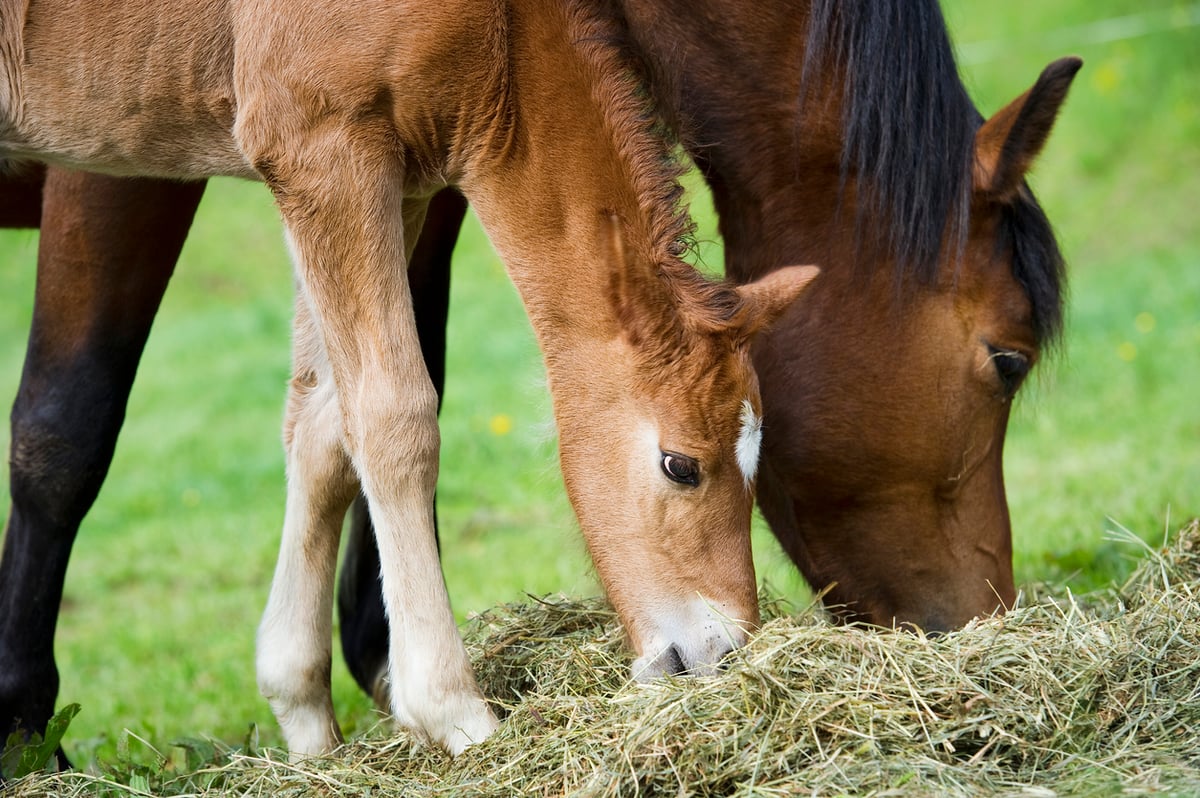
Navicular disease may sound quite risky, especially due to the potential dangers to the horse’s health and well-being.
Navicular disease horse refers to inflammation or other types of degeneration in the horse navicular bone, which may lead to disability or lameness. Reducing inflammation and preventing deterioration can minimize the impact of navicular disease.
There are a few preventative measures you can take to reduce the chance of contracting navicular disease in the first place, such as using supplements like TRI-ACTA to reduce inflammation and support the joint structures around the navicular bone, along with other prevention options.
Proper Hoof Care
Quality trimming and shoeing are crucial for preventing navicular disease in horses.
This can fix the balance in the heel, helping it maintain solid contact with the ground while the horse is walking. Decent footing and balance can go a long way in preventing issues with the navicular bone.
Regular Exercise
Working out regularly in good form on grounds that are even and won’t cause your horse to overexert itself will help their hooves stay healthy.
It also had the added benefit of keeping their weight within a relatively healthy range.
Activity is also great for keeping a horse from stagnating and becoming stressed out, and stress is another potential factor that might increase infection in the navicular bone.
Medication
Often, issues in the navicular bone arise due to insufficient blood flow into the area.
Giving your horse anticoagulants or vasodilators can improve blood flow into their hooves, reducing the potential for pinched nerves or pain.
Anti-inflammatory drugs are used to reduce pain during the treatment but have also been shown to reduce the lameness itself if accompanied by other changes to the hoof care by preventing further damage to the hoof.
Proper Nutrition
Without good nutrition, your horse won’t be able to maintain proper hoof formation.
Nutrition also helps the horse keep a healthy body weight, especially if they are training or travelling. Equine supplements are a great option for preventing injury, improving performance, and promoting joint function.
Great exercise and care are preventative measures that greatly reduce your horse’s chance of unhealthy hoof formation, which could lead to navicular disease.
Even if your horses are healthy at the moment, they won’t stay healthy unless you continue to provide them with proper nourishment and activity.
This is especially important for horses with a high activity level.
In fact, 98% of professional caregivers reported adding to their horse’s diet with nutritional supplements to enhance performance and provide health benefits, a higher percentage than the non-professionals.
So what happens if your horse contracts navicular disease?
Thankfully, there are options for treatment even if they are already exhibiting navicular horse symptoms.
What are Treatment Options for a Navicular Horse?
Before you start to consider medical intervention for your horse, keep in mind that each horse is different.
Just because a certain type of treatment will work for another horse doesn’t mean it will work for yours. The best course of action is to go and obtain a proper diagnosis and advice from a licensed horse doctor before adopting any of these treatments.
With this said three of the most common treatment options for navicular syndrome are:
- Proper shoeing and trimming
- Prescription of anti-inflammatory drugs
- Use of bisphosphonates
Let’s explore each in a little more detail.
1. Proper Shoeing and Trimming
At the early stages of navicular disease in horses, fixing their footing may be enough to treat the onset issues with the navicular bone.
This can reduce tension and shock to the horse navicular, reducing navicular horse symptoms.
2. Prescription of Anti-Inflammatory Drugs
Reducing inflammation in soft tissue can help alleviate the navicular syndrome in horses suffering from it.
They are also effective for pain management if the pain arises from the soft tissue.
3. Use of Bisphosphonates
This is a drug that reduces bone remodelling and prevents pain from bone changes. If your horse is suffering from bone inflammation in particular, this is a highly effective treatment to try out.
While these treatments are usually effective, preventing the disease before it occurs is always better than treating it while it’s at its peak.
Navicular disease can lead to long-term disability and lameness if discovered too late, so you want to be vigilant in inspecting your horse’s hooves, even if they do not show obvious symptoms.
Managing a Horse with Navicular Disease
Horses experience a lot of wear and tear and, as a result, are susceptible to conditions such as ringbone in horses, splint bone, and other diseases. Like most degenerative disorders, managing a horse with navicular disease requires proper feed, exercise, and supplements.
Best Feed For Horses With Navicular
Many hoof problems can be linked to an inadequate diet. Proper nutrition can have a significant impact on good strength and structure. Choosing the best feed for horses with navicular disease can profoundly impact their hooves’ health.
According to equine nutritionists, happy hooves require a balanced diet including adequate nutrients including:
- Protein
- Energy
- Vitamins
- Minerals
Protein
The best feeds to ensure a protein-rich diet are alfalfa grass. Lysine and methionine are the two essential amino acids to look for in alfalfa grass.
Horses fed a diet high in cereal grains often have a diet deficient in lysine. Lysine deficiencies can result in the restriction of the growth of hoof tissue. Methionine is a slug-continuing amino acid. Sulfur is critical for hoof quality because keratin, the main protein in hooves, is high in sulfur.
Energy
Choosing a feed with adequate glucose and fat levels ensures healthy hooves. Hoof tissue is highly metabolic and consumes glucose, which is the glue that holds the hoof together. Fats play an essential role in helping hooves stay hydrated. Feeds containing ingredients high in omega-3, such as flaxseed, fish oil, and fresh pasture, are shown to improve good quality.
Minerals
These essential components support every biochemical process in your horse’s body and are essential for hoof health, including navicular disease in horses. Equine nutritionists recommend choosing feed high in calcium, an essential macro mineral for skeletal bone formation, muscle contraction and relaxation, and neural function.
Vitamins
A horse’s body produces most of the vitamins it requires, with the exception of vitamin A and vitamin B. Beta-carotene (the precursor to vitamin A) is found in fresh pasture but lost in dried hay. Therefore your horse must have adequate pasture time or have feed supplemented with vitamin A.
Biotin is a vitamin B that strengthens a horse’s hooves and supports navicular in horses. Feeds with biotin supplements are available at most equine feed stores.
Exercising A Horse With Navicular
Navicular disease in horses is often known as a professional sport horse condition and commonly affects dressage horses. Horses that are overworked from a young age are more susceptible to navicular disease symptoms and other hoof-related problems. However, leisure horses aren’t immune to navicular syndrome and the associated problems.
Exercising a horse with navicular disease requires a fine balance between keeping them active and not overdoing it.
Follow these three tips for horse exercise with navicular disease;
- 15 minutes of exercising at a walk or light trot will improve circulation by 15%.
- Exercise your horse on soft surfaces (such as grass) and avoid walking on harder surfaces like asphalt, concrete, and hard-packed soil.
- Avoid walking or trotting the horse in a circle, instead warm up navicular horse walking exercises in straight lines.
Supplements
Navicular in horses refers to inflammation and the deterioration of the navicular bone in the horse’s hooves. Supplements like TRIA-ACTA for Equine contain glucosamine and chondroitin, the essential ingredients to support joint structures and healthy cartilage, along with MSM, a potent natural anti-inflammatory.
TRI-ACTA for Equine contains 100% active ingredients and can be easily blended into your horse’s feed to make the best feed for horses with navicular disease. TRI-ACTA H.A. For Equine is an extra-strength formula containing all the ingredients of regular TRI-ACTA plus added hyaluronic acid. For navicular in horses, hyaluronic acid has been proven to slow disease progression and aid with pain management.
TRI-ACTA H.A. for Equine
Our maximum strength formula is perfect for horses that are ageing, experiencing arthritis and stiffness, are in training and competition, or under a heavy workload.

Frequently Asked Questions
What are the early signs of navicular disease in horses?
If your horse is beginning to develop navicular disease, it will typically begin to exhibit the following symptoms:
- Lameness in one or both front limbs, especially after long periods of sustained activity
- Unnatural weight shifting from one foot to another
- Frequent stumbling due to pain
- Inconsistent stride
These or any other abnormality with your horse’s stride may indicate a problem with the navicular bone.
How Would a Vet Approach Diagnose Navicular Disease In a Horse?
First, a vet would assess the above outward signs (e.g. limping, lameness, stumbling, etc.). The next level of diagnosis would be an X-ray, which would allow the vet to see whether or not there was an issue with the navicular bone. If the X-ray doesn’t show any issue, an MRI or ultrasound might be more effective in locating tissue-level navicular syndrome.
Look at this chart to see what kind of imaging can detect different issues.
| Diagnostic Imaging |
Issues Detected |
| X-Ray |
Bone trauma, tumours, foreign objects lodged inside of the body |
| MRI |
Tumours, cysts, internal bleeding, structural abnormalities, inflammation, infections, blood vessel issues, soft tissue problems |
| Ultrasound |
Infections, certain organ issues, cysts, tumours, reproductive system issues or abnormalities, cardiovascular issues |
Can a Horse With Navicular Be Ridden?
Depending on the severity of the disease, a horse with navicular disease may be ridden while following the recommendations of a veterinarian.
Riding a horse with moderate to severe cases of navicular disease is not only dangerous to the horse but to the rider; lameness causes a loss of balance and the horse is more likely to trip or stumble.
A horse with navicular disease should not be ridden until they are pain-free and sound on its feet.
Can a Horse With Navicular Jump?
Horses with navicular syndrome should not jump or engage in hard activity on their joints and musculoskeletal system. Jumping will only further aggravate inflammation and slow down healing.
How Long Can a Horse Live With Navicular?
While navicular disease in horses certainly presents its challenges, a horse with a navicular disease prognosis has no effect on life expectancy. Your horse may need corrective shoeing and to follow a strict exercise plan, but navicular horses can live for many years with the right pain management and recovery plan.
Can a Horse Recover From Navicular?
Recovery can be difficult, especially if you catch your horse in the later stages of the disease.
If you can identify navicular diseases when your horse is younger, however, and treat them properly to remove the source of concern, it is still possible that your horse can maintain a comparable state of performance as it had before the diagnosis.
Conclusion
At the end of the day, prevention is better than treatment and saves you time and money as a horse owner.
Proper nutrition is key to maintaining a horse’s health in the long run, so horse supplements are a great solution for any horse who needs an extra boost of nourishment due to exercise, lifestyle, or genetic issues.
If you’re interested in finding out more about supplementing your horse’s health, Integricare supplements may provide the right nutrition for your horses to prevent navicular disease and other joint problems in the long run.
With active ingredients and no fillers, their products are a great fit for any horse owner looking to optimize performance, maintain horse health, and reduce chronic pain.
No matter what method you choose, you will have to account for your horse’s health and prevent issues like navicular disease from arising in the first place.
Proper care, nutrition, and maintaining a healthy exercise level will do well in extending your horse’s lifespan, preventing health issues, and improving their performance.
TRI-ACTA for Equine
Providing preventative support for younger horses and helping mitigate the early onset of joint degeneration and other mobility issues.
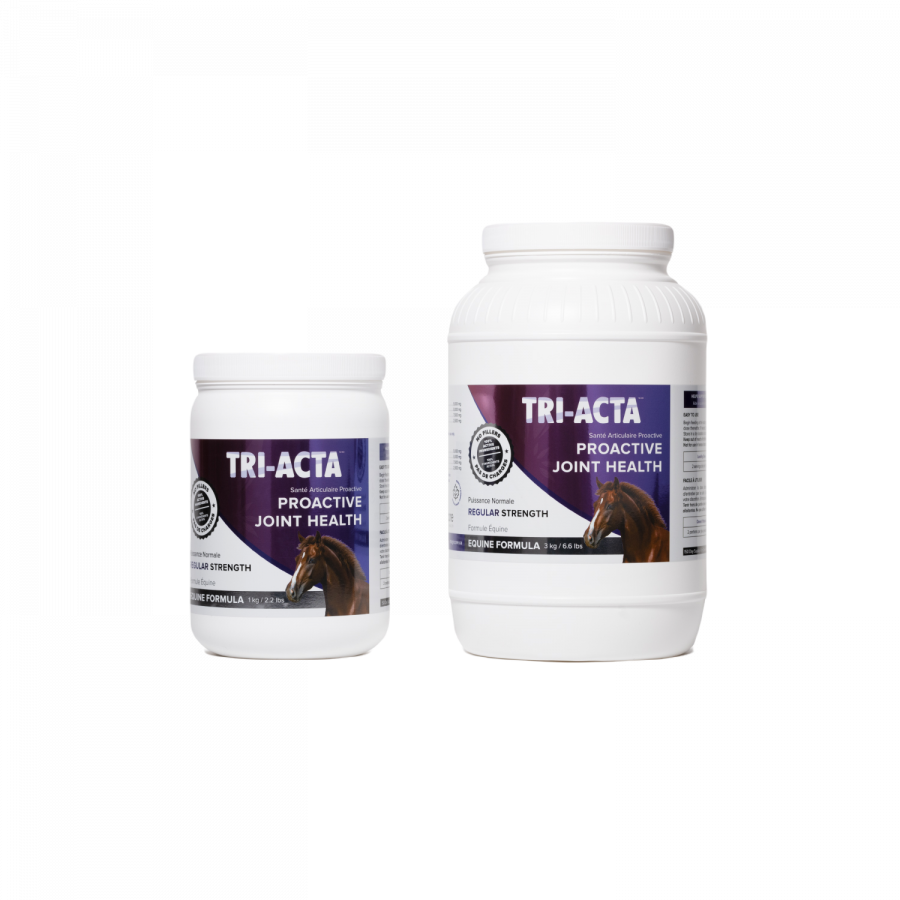
Newsletter Signup
Subscribe to our newsletter to receive the latest news and exclusive offers.
.jpg?height=2000&name=Cliick_Integricare-DISPLAY-REVISEDV2%20(1).jpg)
Proactive & Therapeutic Joint Supplements
When given daily, Integricare joint supplements recover bone and joint injuries faster and help prevent mobility injuries from happening in the first place.

